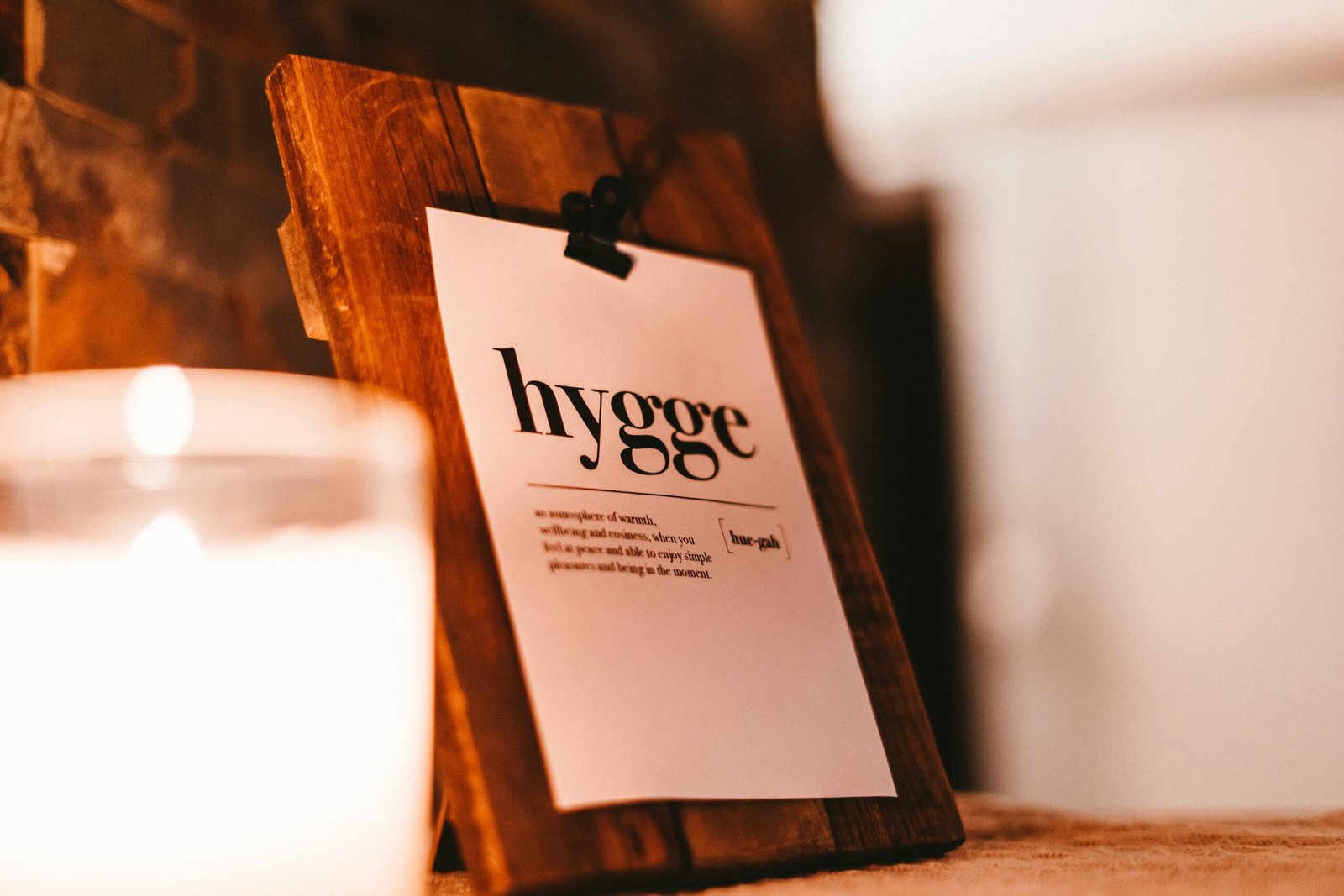Creating a warm and inviting home is more than just an aesthetic choice; it’s about fostering a sense of comfort, contentment, and well-being. The Danish concept of “hygge” (pronounced “hoo-gah”) encapsulates this idea, emphasizing coziness and conviviality. By understanding and applying the principles of hygge, you can transform your living space into a sanctuary that nurtures both body and soul.
Understanding Hygge: The Danish Art of Coziness
Hygge is a central part of Danish culture, representing a lifestyle that prioritizes simple pleasures, warmth, and togetherness. It’s about creating an atmosphere where you can relax and enjoy life’s quiet moments, either alone or with loved ones. This philosophy extends beyond mere decoration; it’s about cultivating an environment that promotes well-being and happiness.
Embracing Natural Elements
Incorporating natural materials into your home is a fundamental aspect of hygge design. Elements such as wood, stone, and plants bring a touch of nature indoors, creating a calming and grounding atmosphere. Wooden furniture with visible grain, stone accents, and indoor greenery can all contribute to this effect. These materials not only add aesthetic warmth but also have been shown to reduce stress and enhance mood.
The Art of Soft Lighting
Lighting plays a crucial role in establishing a cozy ambiance. Soft, warm lighting mimics the gentle glow of candlelight or a fireplace, fostering relaxation and intimacy. Consider using dimmable lamps, string lights, and, of course, candles to achieve this effect. The warm hues of these light sources can make spaces feel more inviting and comfortable.
Creating Cozy Spaces
Designating specific areas in your home for relaxation can enhance the hygge experience. A “hyggekrog,” or cozy nook, is a perfect example. This could be a window seat adorned with plush cushions and throws, a comfortable armchair with a side table for your favorite books and beverages, or any corner that invites you to unwind. The key is to create a space that feels secluded and comforting.
Warm Color Palettes and Textures
Utilizing warm, neutral color palettes contributes to a serene and cozy environment. Shades of cream, beige, soft grays, and muted earth tones create a harmonious backdrop. Layering various textures—such as wool throws, linen cushions, and soft rugs—adds depth and tactile comfort to the space. This combination of colors and textures enhances the overall sense of warmth and invitation.
Personal Touches and Sentimental Items
Incorporating personal items that hold sentimental value can make your space feel uniquely yours. Displaying family photos, heirlooms, or souvenirs from memorable trips adds character and tells your story. These elements contribute to the overall feeling of warmth and belonging, essential components of hygge.
Simplifying and Decluttering
A clutter-free environment promotes a sense of calm and order. Embrace minimalism by keeping only items that serve a purpose or bring you joy. This doesn’t mean creating a stark or impersonal space but rather curating your belongings to reflect simplicity and intentionality. A tidy space allows for relaxation without the distractions of unnecessary clutter.
Seasonal Hygge Décor
Adapting your home’s décor to reflect the changing seasons keeps the environment fresh and in tune with nature. In colder months, incorporate heavier throws, candles, and warm colors. During warmer seasons, opt for lighter fabrics, fresh flowers, and brighter hues. This seasonal rotation not only revitalizes your space but also aligns your home with the natural rhythms of the year.
Spending Quality Time with Loved Ones
Hygge emphasizes the importance of togetherness and shared experiences. Design your living spaces to encourage interaction and communal activities. Arrange seating to facilitate conversation, create inviting dining areas, and consider spaces for games or shared hobbies. The goal is to foster connections and create memories within your cozy environment.
Integrating Hygge into Your Daily Routine
Beyond physical design, hygge is about embracing a mindset that values simplicity and presence. Incorporate daily rituals that promote relaxation and mindfulness, such as enjoying a cup of tea in your cozy nook, reading by soft light, or sharing meals with family and friends. These practices enhance the overall sense of well-being and contentment in your home.
Conclusion
Designing a hygge-inspired home is about more than aesthetics; it’s about creating a space that nurtures comfort, connection, and well-being. By incorporating natural elements, soft lighting, cozy spaces, warm colors, personal touches, and embracing simplicity, you can cultivate an environment that embodies the essence of hygge. This approach not only enhances your living space but also enriches your daily life, promoting a deeper sense of happiness and fulfillment.
Alex is the creator of Homely Haven, a space dedicated to simple, stylish ideas for interiors and gardens alike. With a passion for cozy living rooms, inviting outdoor spaces, and practical DIY solutions, Alex shares tips and guides that help turn any house into a true home.
From budget-friendly decorating hacks to weekend garden projects, the goal is always the same: to inspire you to create spaces that feel personal, beautiful, and welcoming. When not writing, Alex is usually rearranging furniture, sketching new garden layouts, or exploring design trends for the next project.








